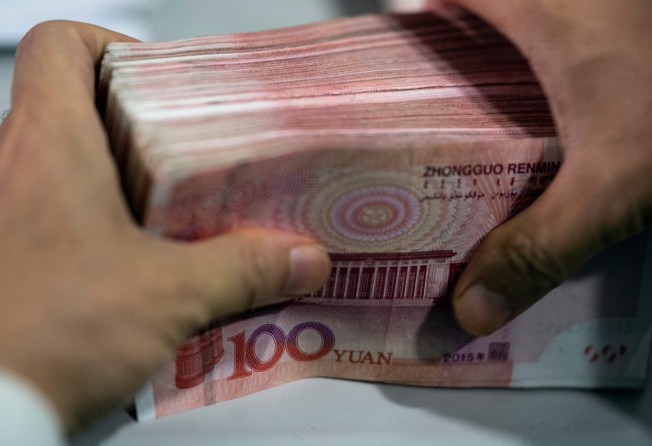China has a choice between the ‘grey rhino’ risk of rising debt or the ‘black swan’ threat of an economic slowdown
- Beijing changes course on macroeconomic policy to cope with slowdown pressure amid the trade war with the United States
- China’s renewed easing of credit conditions on Friday is set to amplify the country’s debt problem

The rapid escalation of the China-US trade war in recent weeks has left Beijing’s policymakers with the choice of two evils: either enlarge the obvious “grey rhino” risk of rising debt or face the unpredictable “black swan” threat of a further economic slowdown, analysts said.
The central government has been trying to keep both at bay for the past two years, with President Xi Jinping saying in January that China must stay on high alert for “black swan” events while preventing “grey rhino” risks from getting out of control.
But Beijing’s policy balancing act might have come to an end last week when the People’s Bank of China announced that it would pump an estimated US$126 billion in additional liquidity into the banking system to boost credit.
By cutting the required amount of reserves a lender must hold at the central bank – on top of a decision to allow local governments to borrow more to support infrastructure investment – Beijing has sent a clear message that it is drawing on pages from its old fiscal and monetary stimulus playbook at the cost of its debt-reduction campaign, which it pursued under Xi before US President Donald Trump began the trade war 14 months ago.
“There’s a trade-off between deleveraging and economic stabilisation. You can only pick one at the moment, rather than choose both,” said Larry Hu, chief China economist of Macquarie Capital.
Hu said Beijing was expected to enact yet more stimulus, which could be rolled out in the next quarter or two, with infrastructure a key target for further government investment.
“It is obvious that the government is increasing its [financial] leverage. But the question is how and to what extent it can do it,” he said.
China officially insists that its monetary policy stance is still “prudent” and that it is not engaging in a massive, all-out stimulus programme like the one it adopted in response to the global financial crisis a decade ago.
But it is clear that its high-profile “deleveraging” campaign to reduce debt and risky lending has been largely shelved, opening up more ground for financial “grey rhinos”.
It is obvious that the government is increasing its [financial] leverage. But the question is how and to what extent it can do it
China first referred to grey rhinos in 2017 to describe systemic risks that can be anticipated. In contrast, a “black swan” event is a major unexpected incident such as a financial crisis.
In July 2017, Wang Zhijun, a top economic official, said that China’s financial grey rhinos included shadow banking, property bubbles, high debt at state firms, hidden local government debt and rampant illegal fundraising.
Beijing’s drive to clean up shadow banking and to cut debt in the past two years has been one of the major factors contributing to a slowdown in China’s economic growth to its lowest level in almost three decades.
In response Beijing has put less emphasis on deleveraging and instead urged local officials to focus on growth and jobs.
Banks have again been asked to lend as long as the loans are not for property speculation, while local governments have been increasing the amount of bonds for infrastructure and other projects, leading to a rise in debt levels in most sectors of the economy this year.
China’s total debt-to-gross domestic product ratio jumped by 5.1 percentage points in the first quarter, and it rose another 0.7 percentage point to 249.5 per cent as of the end of June, according to the National Institution for Finance and Development, a think tank in Beijing.
Chang Xin, deputy director of the institution, said China must tolerate a moderate rise in financial leverage “for the sake of economic stabilisation”.
The Institute of International Finance, a research group funded by big banks, said that China’s total stock of corporate, household and government debt exceeded 303 per cent of the country’s GDP as of July this year and accounted for about 15 per cent of all global debt.
While China’s leaders had repeatedly warned that relying on debt-fuelled investment to spur growth was unsustainable, the world’s second-biggest economy’s addiction to debt would only increase, analysts said.
“Beijing will need to resort to more investment-led growth when the going gets tough, even though it understands the need to curb its habit of ramping up wasteful debt-financed investment,” said Diana Choyleva, chief economist of Enodo Economics.